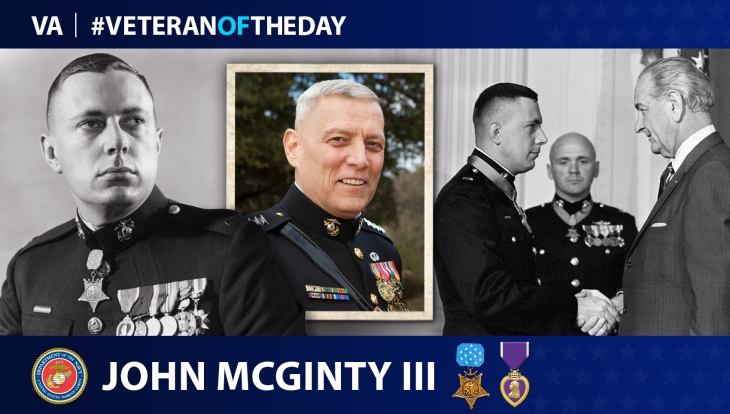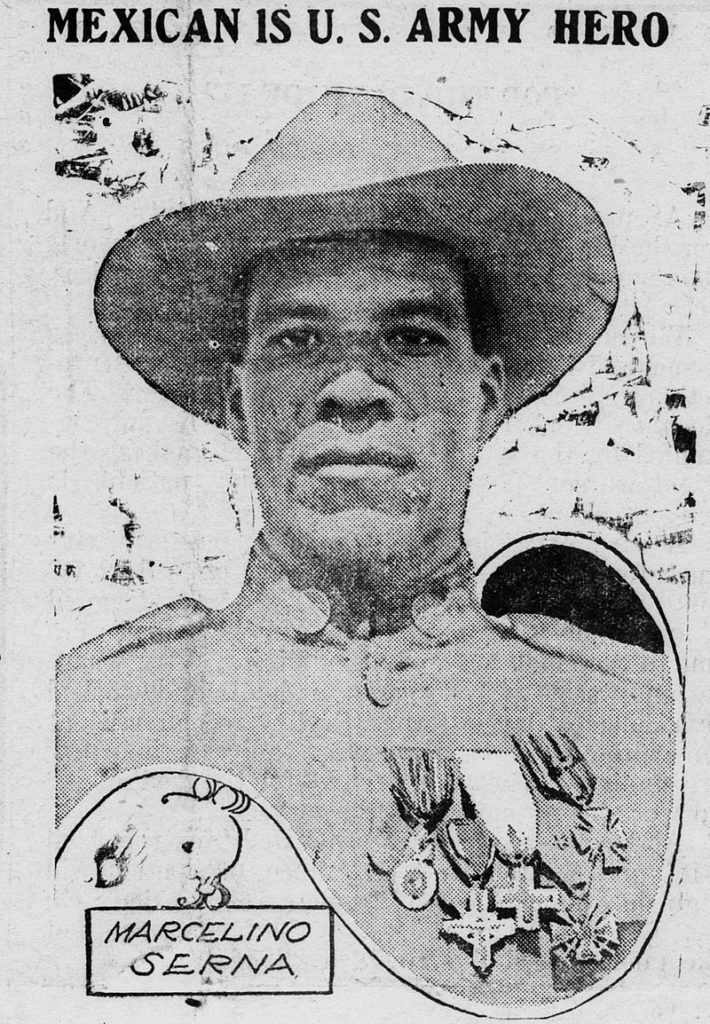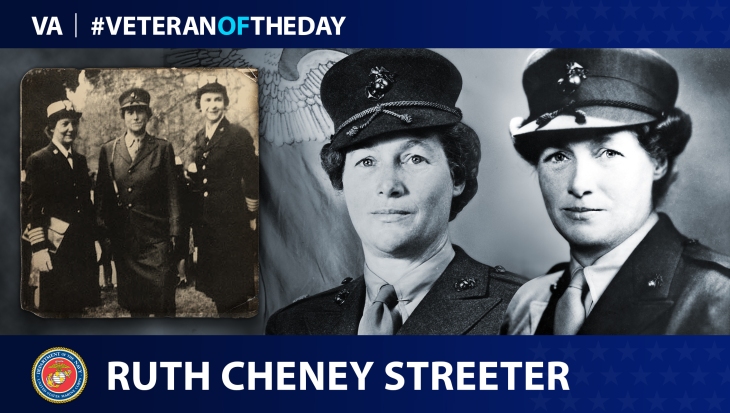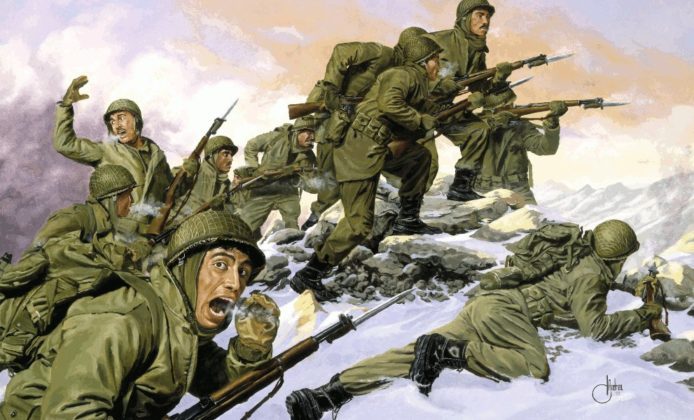
#VeteranOfTheDay Marine Veteran John McGinty III

Today’s #VeteranOfTheDay is Marine Corps Veteran John McGinty, who received a Medal of Honor for his leadership during the Vietnam War.
John McGinty was born in 1940 in Massachusetts and grew up in Connecticut and Kentucky. McGinty enlisted into the Marine Corps Reserve in February 1957 in hopes of seeing the world outside of Louisville. Originally, he enlisted for a six-month reserve position, but he continued his service, enlisting in the Marine Corps active duty on March 3, 1958.
McGinty attended recruit training at Marine Corps Depot at Parris Island, South Carolina, and completed advanced infantry combat training at Camp Lejeune, North Carolina. Upon completing training, he was promoted to private first class in September 1957 before transferring to Louisville, Kentucky, to serve as a rifleman. McGinty attended Noncommissioned Officers Leadership School in May 1958. He then was ordered to Kodiak, Alaska, where he was promoted to corporal in September 1958 and remained there until 1959. After returning to mainland U.S., he was stationed in Norfolk, Virginia, and again Parris Island, where he was promoted to sergeant in 1962.
In 1966, McGinty deployed to Vietnam with the 4th Marine Regiment, 3rd Marine Division. On July 18 of that year, during Operation Hastings, McGinty’s platoon came under attack. The enemy attacked for three days without relent, using mortars and heavy machine guns.
Under his leadership, the platoon secured its ground, but with nearly all 20 of his Marines injured or dead, including a dead medical corpsman, McGinty pushed forward a counterattack despite his own injuries. He directed air attacks while engaging in point blank combat fighting against enemy fire.
In 1967, McGinty returned to the U.S. and was promoted to second lieutenant. For his heroism, he was presented a Medal of Honor on March 12, 1968, by President Lyndon Johnson. He was honorably discharged in 1976. By the time of his discharge, he had been promoted to captain.
McGinty died in January 2014 in Beaufort, South Carolina. He is buried at the Beaufort National Cemetery.
We honor his service.
Nominate a Veteran for #VeteranOfTheDay
Do you want to light up the face of a special Veteran? Have you been wondering how to tell your Veteran they are special to you? You’re in luck! VA’s #VeteranOfTheDay social media feature is an opportunity to highlight your Veteran and his/her service.
It’s easy to nominate a Veteran. All it takes is an email to ne******@**.gov with as much information as you can put together, along with some good photos. Visit our blog post about nominating to learn how to create the best submission.
Veterans History Project
This #VeteranOfTheDay profile was created with interviews submitted to the Veterans History Project. The project collects, preserves, and makes accessible the personal accounts of American war Veterans so that future generations may hear directly from Veterans and better understand the realities of war. Find out more at http://www.loc.gov/vets/.
Writer: Sarah McDonald
Editors: Ashley Shaut, Cate Manning
Researcher: John Bergstrom
Graphic Designer: Kiki Kelley
Recommend0 recommendationsPublished in Force for Health® Network News, My Healthy Veteran









